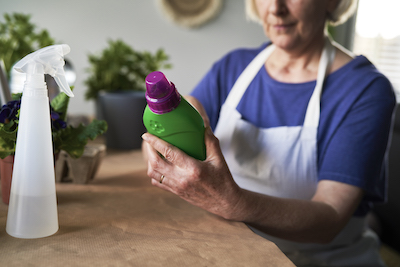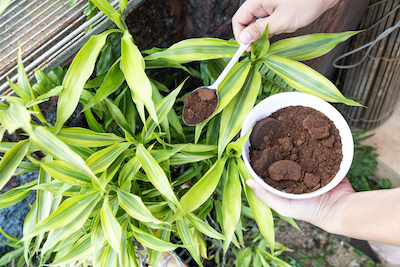Can I Over-Fertilize My Plants? What Are the Consequences?
Gardening enthusiasts often find themselves pondering, “Can I over-fertilize my plants? What are the consequences?” The short answer is yes, as too much of a good thing can sometimes be detrimental.
In this comprehensive guide, we’ll delve into the intricacies of plant fertilization, discussing the risks associated with overdoing it and offering valuable insights on how to strike the right balance for a flourishing garden.
Understanding Plant Fertilization
Before we explore the potential repercussions of over-fertilization, it’s essential to grasp the basics. Fertilization is the process of providing plants with essential nutrients to support their growth. These nutrients, including nitrogen, phosphorus, and potassium, are vital for healthy foliage, robust roots, and vibrant blooms.
The Dangers of Over-Fertilization
1. Nutrient Burn
Overloading your plants with excessive fertilizer can lead to nutrient burn. This occurs when the roots absorb more nutrients than the plant can effectively utilize. The result? Unsightly leaf discoloration and damage.
2. Stunted Growth
Believe it or not, too much of a good thing can stunt growth. When plants receive an abundance of nutrients, they divert their energy towards excessive foliage production at the expense of overall development.
3. Root Damage
Over-fertilization can spell trouble for a plant’s root system. Excess salts from the fertilizer can accumulate in the soil, creating an inhospitable environment for roots. This can impede their ability to absorb water and nutrients.
4. Reduced Disease Resistance
Plants that are over-fertilized may become more susceptible to diseases and pests. The weakened state of the plant makes it a prime target for various pathogens.

How to Save an Overfertilized Plant
Discovering that you’ve overfertilized a plant can be disheartening, but don’t despair. With prompt action and the right techniques, it’s possible to revive an overfertilized plant and nurse it back to health. Here’s how:
1. Act Quickly
Time is of the essence when dealing with an overfertilized plant. The longer the excess nutrients remain in the soil, the more damage they can cause.
2. Flush the Soil
Thoroughly water the plant to flush out the excess nutrients. Use distilled water if possible, as it contains fewer minerals that could exacerbate the issue.
3. Drainage is Key
Ensure that the plant’s pot has good drainage to allow excess water and nutrients to escape. If the pot doesn’t have drainage holes, consider repotting the plant into a container that does.
4. Repot if Necessary
If the damage is severe, consider repotting the plant in fresh, well-draining soil. This will give the roots a chance to recover in a more hospitable environment.
5. Monitor Closely
Keep a close eye on the plant in the following weeks. Look for signs of improvement or further distress. Adjust your care routine accordingly.
6. Reduce Watering
After the initial flush, be cautious with watering. Allow the soil to dry out slightly before watering again. This helps prevent further nutrient buildup.
7. Provide Adequate Light
Ensure the plant receives the appropriate amount of light for its specific species. Proper lighting encourages healthy growth and can aid in recovery.
8. Limit Fertilization
Refrain from fertilizing the plant for a considerable period, allowing it time to recover. When you do resume fertilizing, use a diluted solution.
9. Consider Activated Charcoal
Placing a layer of activated charcoal at the bottom of the pot can help absorb excess nutrients and toxins, providing a buffer for the plant’s roots.
10. Be Patient
Reviving an overfertilized plant takes time. It may not show immediate signs of improvement, but with consistent care, it can bounce back.
11. Seek Professional Advice
If you’re unsure about the specific needs of your plant or if it’s not showing signs of recovery, consider consulting a local nursery or horticulturist for expert guidance.
Remember, prevention is the best medicine when it comes to overfertilization. Always follow recommended fertilization guidelines and be attentive to your plants’ needs. With care and patience, even an overfertilized plant can have a second chance at thriving.
How to Ensure You Don’t Overfertilize Your Plants
Ensuring your plants receive the right amount of nutrients is crucial for their health and growth. Overfertilizing can lead to a host of problems, but with some careful steps, you can keep your plants thriving without risking their well-being.
1. Understand Your Plant’s Needs
Different plants have varying nutrient requirements. Take the time to research and understand what specific nutrients your plants need at different stages of their growth. This knowledge will guide you in choosing the right type of fertilizer and applying it appropriately.
2. Use a Quality Fertilizer
Invest in a reputable, well-balanced fertilizer. Look for one that provides the essential nutrients in the correct ratios for your specific plants. High-quality fertilizers are less likely to cause over-fertilization because they are designed to release nutrients gradually.
3. Measure Accurately
Follow the manufacturer’s instructions for mixing and applying the fertilizer. Using more than the recommended amount won’t necessarily lead to better results and can actually harm your plants. A small-scale, precise measuring tool can be invaluable for this task.
4. Opt for Slow-Release Fertilizers
Consider using slow-release fertilizers. These release nutrients gradually over time, reducing the risk of overfertilization. While they may cost a bit more upfront, they can save you from potential plant damage in the long run.
5. Monitor Your Plants
Keep a close eye on your plants for any signs of distress. Yellowing or browning leaves, stunted growth, or wilting can be indicators of overfertilization. If you notice these signs, take action promptly.
6. Conduct Soil Tests
Periodically test your soil to assess its nutrient levels. This will give you a clearer picture of what your plants need and help prevent the guesswork that can lead to overfertilization.
7. Water Thoroughly After Fertilizing
After applying fertilizer, water your plants thoroughly. This helps to distribute the nutrients evenly and prevent them from accumulating in one spot, which can lead to overfertilization.
8. Consider Organic Alternatives
Organic fertilizers are generally milder and less likely to cause overfertilization. They release nutrients slowly and improve soil structure over time. Consider incorporating compost, well-rotted manure, or other organic matter into your gardening routine.
9. Keep a Fertilization Schedule
Establish a regular fertilization schedule based on the specific needs of your plants. This will help you maintain consistency and avoid the temptation to overfertilize out of concern for your plants.

The Elements of Fertilizer
Fertilizers are essential tools in the arsenal of any dedicated gardener. They provide plants with the nutrients they need for healthy growth and robust development. Understanding the key elements of fertilizers is crucial for tailoring your plant care regimen to meet specific needs. Here are the primary elements commonly found in fertilizers:
1. Nitrogen (N)
Nitrogen is a fundamental nutrient for plants, playing a vital role in the formation of chlorophyll, which is essential for photosynthesis. It promotes lush, green foliage and vigorous vegetative growth. Nitrogen-rich fertilizers are particularly beneficial for leafy vegetables and plants in their early growth stages.
2. Phosphorus (P)
Phosphorus is essential for strong root development, flower and fruit production, and overall plant energy transfer. It aids in the conversion of sunlight into usable energy and supports the synthesis of DNA and RNA. Fertilizers with higher phosphorus content are ideal for flowering plants and those establishing their root systems.
3. Potassium (K)
Potassium is crucial for overall plant health, helping in the regulation of various physiological processes. It strengthens the plant’s immune system, aids in drought resistance, and promotes robust cell structure. Fertilizers rich in potassium are beneficial for enhancing disease resistance and stress tolerance.
Can I Over-Fertilize My Plants? What Are the Consequences? Expert FAQs
How can I tell if I’ve over-fertilized my plants?
Look for signs of nutrient burn, such as yellowing or browning leaf edges. Additionally, observe for stunted growth or wilting.
Is it possible to save an over-fertilized plant?
Yes, it is. Flush the soil thoroughly with water to remove excess salts, and consider repotting if the damage is severe.
How often should I fertilize my plants to avoid overdoing it?
The frequency of fertilization depends on the type of plant and the specific fertilizer being used. Always follow the manufacturer’s guidelines.
Can organic fertilizers also lead to over-fertilization?
Yes, while organic fertilizers are generally less concentrated, it is still possible to overdo it. Always apply them according to recommended dosages.
Are there any plants that are particularly sensitive to over-fertilization?
Yes, certain plants, like succulents and cacti, have low nutrient requirements and can be easily overwhelmed by excess fertilizer.
What are some alternatives to chemical fertilizers to avoid over-fertilization?
Consider using compost, well-rotted manure, or organic matter to provide plants with the necessary nutrients in a more balanced and natural manner.
Conclusion
In conclusion, understanding the delicate balance of plant fertilization is paramount for any dedicated gardener. The answer to the question, “Can I over-fertilize my plants? What are the consequences?” is yes. This prompts us to approach this task with care and precision.
Overdoing it can lead to nutrient burn, stunted growth, and root damage, among other issues. However, armed with knowledge and the right practices, we can nurture our plants to their full potential without compromising their health. Remember, a little goes a long way in the world of plant care, and a thoughtful approach will yield a garden that thrives in vibrant, healthy splendor. Happy gardening!

